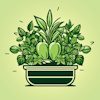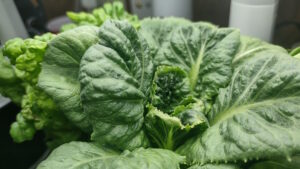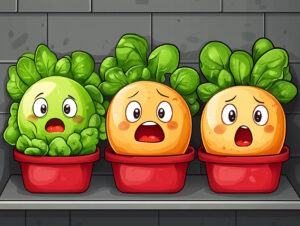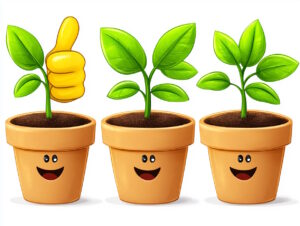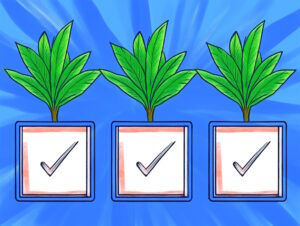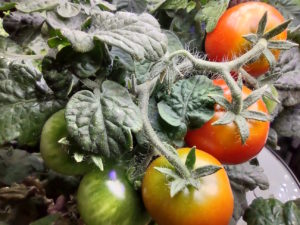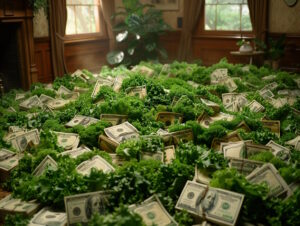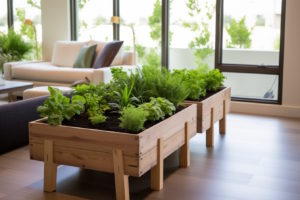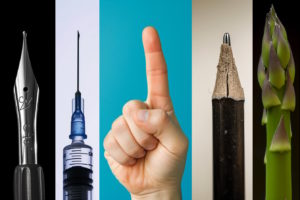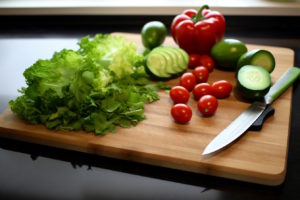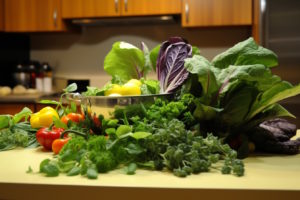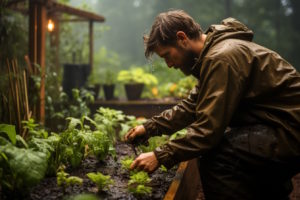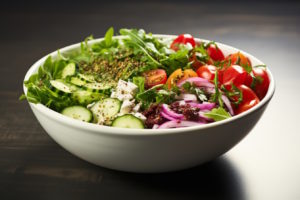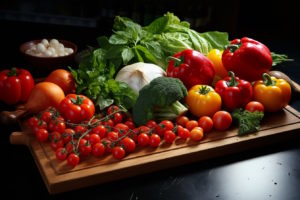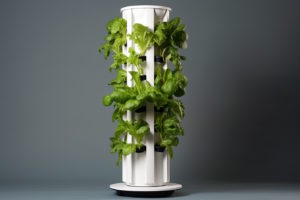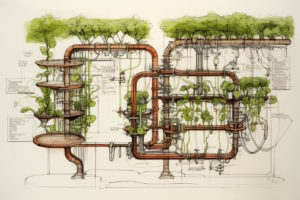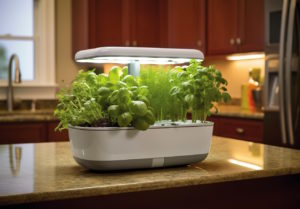Indoor Gardens Aren’t Outdoor Gardens Indoors
Indoor and outdoor gardens are different. If you grow a garden indoors like you grow one outdoors, you’ll miss out on many advantages of indoor gardens. Indoor gardens aren’t outdoor gardens indoors.
Indoor gardens are the next evolutionary step in growing food. What started with rows plowed in fields moved to outdoor raised beds and greenhouses and, finally, indoor gardens. Each evolutionary step in growing food increased the control the grower had over the grown.
Growing food indoors requires a mindset different from that of growing food outdoors.
To get the most from your indoor garden, you need to adopt the indoor-gardener mindset. Take advantage of the many benefits of growing food indoors. And, if you have an outdoor garden as well, use your indoor garden to improve your outdoor garden.
So, what are the considerations for gardening indoors?
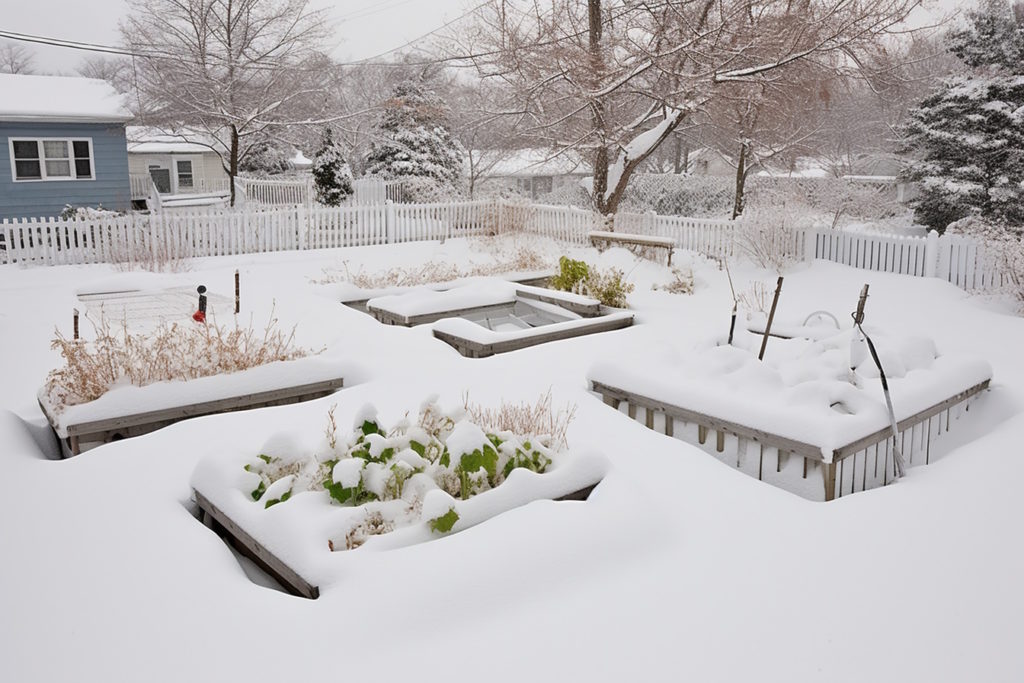
Outdoor Gardens Are Seasonal
Seasons are the definitive limiter on an outdoor garden. The instructions on the back of a packet of seeds tell you the month in which you should plant those seeds to achieve your greatest chances of success. Sowing your tomato seeds in November is the wrong season for tomatoes to grow. Seasons matter more than any other factor in your outdoor garden.
You dutifully plant all the seeds in the packet during the recommended month, adjusting for the possibility of frost. You tend to your garden until the time comes to harvest your produce. Then, over the course of days or a couple weeks, you pick, clip, or dig up as much food as possible.
Then you wait until the next time the recommended month rolls around to plant again.
You Get One, Maybe Two Chances Per Year
With an outdoor garden, for many plants you get one or two windows of opportunity per year to plant each type of seed.
You cannot predict the weather your plants will encounter over the next 50–100 days. You’re making an educated guess as to the best day to put seeds in the ground.
To mitigate the risk of crop failure, you sow some seeds or plant some seedlings every day or couple of days over the span of a few weeks. If you plant too early, a frost may damage your plants. If you plant too late, the hot temperatures may also damage your plants.
You Can’t Eat It all at Once
When you plant once or twice a year, do you know what you get? You get a harvest once or twice a year.
When you get one chance to produce your crop, you mitigate the risk that a percentage of your crop will fail. How? By planting more than you can eat at harvest time.
What happens to the excess produce from your garden? You probably take some of it to work and give it away. You collected it but it spoiled before you could eat it. Maybe you just stop harvesting after you’ve collected all you can eat, so it rots. In other words, you worked to grow food you did not eat. You may have canning and freezing skills, so you put some away to last you until the next harvest. Better, but it’s still not the same as eating fresh food.
Not Everything Stores Well
But some plants don’t keep well. Lettuce, for instance, is generally eaten fresh. If you spaced out your plantings in the spring you’ll get a few weeks of fresh lettuce in summer. What do you do when you want lettuce the other ten or eleven months of the year? You could get two harvests in a year and maybe even a third. That depends on your weather, your level of commitment, and whether you have a greenhouse. Still, you’re going months between harvests without fresh lettuce.
Advertisement
Does-It-All Column Garden
27-Plant Vertical Hydroponics Indoor Growing System
You can’t see the vertical column for all the plants it’s growing. Plants love this garden. A very productive use of floor space.
Indoor Gardens Are Anytime
In contrast to an outdoor garden, which is based upon seasons, you may start an indoor garden anytime of the year. There are no seasons indoors. This completely changes how you approach your garden.
With an outdoor garden, you plant everything you have in the spring and harvest everything you grow in the summer or autumn. Then you eat, donate, or store your harvest. With an indoor garden, you plant only as many herbs, greens, and vegetables as will satisfy your needs on any given day.
If you like 5 cherry tomatoes in your salad and you eat a salad every other day, your tomato plant need only average 2-3 ripe tomatoes per day to meet your expectations. Your lettuce plants need only supply a few leaves per day for your salad. One cucumber can last you through two or three salads, so you harvest one or two cucumbers per week.
See the companion article, How to Get a Salad Every Day from Your Indoor Garden.
Plant Something New Anytime
Inside your house, every day is the right season to plant something.
If you want a larger garden and you have the space for it, whether it’s April or November, you can expand your indoor garden.
When you tire of one plant, you can terminate it and begin another. You cannot do this with plants growing outdoors, because you’ve already passed the season for starting that other plant.
Harvest Your Food Every Day of the Year
When the plant you grow indoors reaches maturity, you may begin your harvesting. If you stagger your planting schedule for such plants as lettuce, you’ll have a new crop reach maturity as the old crop is consumed or reaches the end of its natural life span.
Your plant continues to produce for its natural life span. Frost and freezing temperatures don’t cut your harvest short.
No More Storing Food For Winter
So, if you can plant anytime you want, and you can arrange your planting schedule to ensure you always have a plant to harvest, you don’t need to store food for the winter.
If it can be grown indoors, and if you can grow enough to satisfy your daily needs, you don’t need to grow an excessive amount once a year and freeze, can, or dry it for long-term storage.
Outdoor Gardens Need Outdoor Tools
Your outdoor garden requires outdoor garden tools. Those tools include a tiller, hoe, rake, and shovel. To build a raised bed, you need lumber, screws, a cordless impact driver, weed barrier, and lots of peat moss, compost, and vermiculite. You’ll need a trellis for each large plant.
You might have a cold frame or small greenhouse for extending your growing season.
The tools you need for gardening outdoors are intended for controlling nature. You are turning over topsoil, or you are building large-scale containers to hold a topsoil substitute. But, in the end, you are still subject to the whims of nature.
Indoor Gardens Need Indoor Tools
The toolset for growing food indoors is nothing like the toolset you’d use for growing food outdoors. Your indoor garden uses four or more systems.
- Hydroponic Growing System
- Self-Water Container with LED Grow Light
- Traditional Container with LED Grow Light
- Microgreens
Hydroponic Growing System
Hydroponic Growing System has to be the absolute worst name for such an ingenious self-contained garden, but it is certainly descriptive.
A hydroponic growing system is a stand-alone device for growing plants indoors, a “garden in a box”. It is a system for growing plants with their roots in water (hydroponic) instead of soil, using a built-in LED grow light as a substitute for sunlight. A computer powers the LED grow light to simulate daytime and nighttime and keeps the plants hydrated by circulating the water.
See the companion article, How a Self-Watering Hydroponic System Works, for a detailed description.
You insert pods containing seeds into the hydroponic growing system. You add liquid nutrients to the water. The device waters the plants and provides their light. The seeds grow into beautiful, healthy plants. It is truly that easy.
Suffice it to say, a hydroponic growing system makes it hard for even the worst gardener to fail at growing plants.
You can run as many hydroponic growing systems in your house as you want and will fit. The more common devices will grow six to nine plants each. High capacity devices will grow 24 plants, and some even more.
Advertisement
Deep Gardening
Carrots, beets, onions, and more
This self-watering gardening system grows healthy plants quickly. It’s square foot gardening, but indoors.
Self-Watering Container System
Hydroponic growing systems work great for most plants with normal root systems. Root-based plants like carrots and beets don’t work well in a hydroponic growing system. For these types of plants, use a self-watering container system. Another system!
The self-watering container system is a system consisting of a container designed to wick water (self-watering) from a reservoir to the roots of plants growing in a soil-substitute. A LED grow light provides artificial sunlight to the plants. Instead of watering your plant by pouring water down on the soil, you pour water down a tube to fill the reservoir, and the water moves upward toward the roots.
This is a system that involves using a recommended soil-substitute, typically a sorghum peat and vermiculite combination, along with a fertilizer chosen based up on the type of plants you are growing.
The system provides an environment highly favorable for growing plants. However, unlike the hydroponic growing system, which comes as a single device, you’ll need to supply a LED grow light and timer to make this a system. These containers have overflow holes to prevent you from overfilling the reservoir. To be used indoors, you’ll want to use a small tray to catch any overflow water.
Advertisement
No Sunlight? No Problem!
Stop cramming plants on the window sill!
A LED grow light is a game-changer for indoor gardening. Combine with an EarthBox or Easy Picker for an astonishing indoor garden. Your plants get the type of light they love.
Traditional Container with LED Grow Light
You can still grow plants in traditional pots on a shelf under a LED grow light. So long as the plant has a quality potting soil, good fertilizer, and enough light and water, it should grow well. This is not a system; it’s a plant you water.
You can put the LED light on a timer to automate one of your tasks. Consistent lighting will encourage plant growth. But as the plant grows, you’ll transplant it to a larger pot. You’ll water the plant manually. As mentioned earlier, this is not a system.
However, it is part of an indoor garden, and for that reason, your plant can grow to its full potential and live out its natural life span. Growing plants using a system is a benefit of growing plants indoors, but by no means do you need to have a system to grow healthy plants.
Microgreens
Microgreens are typically an indoor garden. You grow a collection of seeds strewn on a wet surface with the intent of harvesting all the plants that grow when they reach just a few inches in height. The sprouts are the harvest.
Sprouts flavor salads and serve as ingredients in a variety of recipes. You eat the entire plant.
You can grow microgreens using dedicated devices or trays that fit in a hydroponic growing system.
Outdoor Gardens Are Speculative
The outdoor garden is, well, outdoors. And the outdoors has a habit of being unpredictable. And uncontrollable. Your garden is at the mercy of the weather and the wildlife, from bugs up to deer.
You can only control so many variables in an outdoor garden. You can improve the soil with fertilizer and apply water using a timer. You can shade the delicate plants and ensure others get the maximum exposure to sunlight. You can spray bug repellent on the leaves and pluck off those voracious neon green caterpillars that can eat an entire tomato plant overnight. But, in the end, you are at the mercy of the environment.
Outdoor gardens are speculative. You plant with the hopes you’ll get a bountiful harvest, but one hail storm or late frost can wipe out hours or days of work.
Then you start over, if it’s not too late in the season.
Advertisement
AeroGarden Bounty Elite
Indoor Gardening at its Best
The AeroGarden Bounty Elite is a self-contained garden with all the cool conveniences. It’s so amazingly easy to grow your own food with these rigs. Try it for yourself.
Indoor Gardens Are Controlled
You control the environment for your indoor garden. You manage the temperature and the watering schedule. Bugs can always find their way to a living plant, even one indoors, but they’re more readily controlled indoors. The risk of having a freak hail storm destroy your indoor garden is slight, to say the least.
Fewer variables affect your success growing indoors than with an outdoor garden. The weather and pests are all but irrelevant for an indoor garden. With the time you save not protecting your plants from the environment, you can focus on improving the plants themselves.
You add nutrients to the water at the optimal time. You trim your plants to encourage healthy growth. You harvest at just the perfect ripeness.
For you, that level of care means you can more accurately predict when your plants will be ready to eat. Your plants will supply more tomatoes or peppers or lettuce leaves. Even better, the food you collect will be clean and free of bug-related damage. And you can start growing replacements at just the right time to replace your current plants when they’re no longer producing.
Since you control the environment for your indoor garden, you can experiment. You can try to increase your crop yield by adjusting how much nutrients you add to the water or try different brands of nutrients. You can prune a lot or a little, and compare the results. And as you learn, you can apply your knowledge to the next crop. Without having to wait until next spring to start again.
Outdoor Gardens are Spacious
Outdoor gardens take up a lot of space. You need a field to plow rows or a back yard to build raised beds. If you don’t have the space for these, then your options for an outdoor garden are limited. You can grow plants in containers, which will fit on a patio, but your volume is limited by the small space.
Square foot gardening techniques maximize the number of plants you can grow in a raised bed. If you are growing food outdoors, and you are not using square foot gardening, you must look into this technique. However, even raised beds are larger than you need because you must grow a surplus of food to be sure you get enough to eat and store for the winter.
Outdoor gardens must be oversized because you only get one shot at producing food for the year. You must grow enough to compensate for plants lost to weather, disease, bugs, or critters.
One defining factor of outdoor gardens is that all plants grow on a single layer. All the plants grow side-by-side. Even in a raised bed garden.
Indoor Gardens Are Compact
Indoor gardens are compact for three reasons.
- You can grow your food vertically or on shelves to minimize the amount of floor space your garden occupies.
- You can spread your harvest over the entire year, meaning you don’t need to grow as many plants at one time as you would with an outdoor garden.
- Your plants produce more and live longer, so you can plant fewer plants.
Some plants can be grown closer together in a hydroponic growing system than in a raised bed implementing square foot gardening. A self-watering container system uses square foot gardening techniques.
Advertisement
30 Plants on 2 Square Feet
Gardyn 3.0 Hydroponics Growing System
Even the smallest apartment has room for this little beauty. This charming tower needs just 2 square feet of floor space to grow 30 plants.
Indoor Gardens Have Added Benefits
Growing your food indoors has additional benefits over an outdoor garden.
Start Seeds Indoors For Growth Outdoors
If you have started seeds indoors in the past, you have probably used a plastic seed starter tray filled with potting soil or sorghum peat. You may have added a heating pad to speed things along. Now, you have a new way to start seeds.
Your hydroponic growing system may accept a seed starter tray to start many seeds quickly. A seed starter tray greatly increases the number of seedlings you can grow at one time and is not designed to take a plant to maturity. When the time comes to transplant the seedling, just pop out the grow plug with the seedling in it and move it outdoors.
Immediately Available
It’s raining. Is it worth going outside with a bowl and scissors to collect the herbs for your homemade spaghetti sauce tonight?
When you are gathering the ingredients for your spaghetti sauce, your indoor herb garden is just a few steps away. It’s dry, clean, and handy.
If your healthy food is conveniently accessible, you are more likely to eat it. An outdoor raised bed garden is available, but not necessarily convenient.
Key Takeaways
You approach planning for an indoor garden with a different mentality than with an outdoor garden. The timetable is different, with an indoor garden offering far more flexibility. The indoor garden is consistent, steady, and predictable, without the myriad variables that challenge an outdoor garden.
Your indoor garden is unconstrained by seasons. The tools for growing food indoors are completely different than those you use outdoors. You control almost all the variables for your indoor garden except the seed itself. And indoor gardens can be more compact than an outdoor garden.
Your indoor garden is not an outdoor garden indoors. It’s completely different, with different parameters. By treating your indoor garden as an indoor garden, you’ll get a bountiful harvest every time, all year long.
You Have A New Hydroponic Growing System. Now What?
You have a new indoor garden and high hopes. What do you do next?
Keep ReadingSurviving in a Post-AeroGarden World
AeroGarden announced its closing effective the first of January, 2025. Farewell, good friend.
Keep ReadingThe Most Reviewed Indoor Gardening Equipment
You don’t get thousands or tens of thousands of reviews by being a horrible product. What works? Find out here.
Keep Reading32 Factors to Consider When Setting Up Your Indoor Garden
Avoid making simple mistakes when you set up your indoor garden.
Keep ReadingYou Can Grow Tomatoes Indoors
You can grow delicious tomatoes indoors all year long, and it’s actually quite easy. Get started now!
Keep ReadingIs Indoor Gardening Expensive?
Is gardening indoors expensive? Relatively, no.
Keep ReadingA Raised Bed Garden Indoors? Bring It On!
Learn how to grow your food indoors using an indoor garden bed.
Keep ReadingTips For Growing A Bountiful Indoor Garden
Make your life easier and grow more food indoors with these tips, tricks, and suggestions.
Keep ReadingHow to Choose Your Hydroponic Growing System
Ready to buy a hydroponic growing system, but not sure what features matter? Start here!
Keep ReadingHow to Plan Your Indoor Garden
Get more from your indoor garden by gardening with a purpose.
Keep ReadingIndoor Gardens Aren’t Outdoor Gardens Indoors
When you grow your garden indoors, you leave the old traditions and limitations outdoors.
Keep ReadingHow to Get a Salad Every Day from Your Indoor Garden
You can grow an indoor salad all year long. Learn how!
Keep ReadingWhat Can I Grow with My Indoor Garden?
Spoiler alert: Almost anything! This is a LONG list. And it’s really easy.
Keep ReadingLimited Floor Space? Go Vertical With Your Garden!
Learn about vertical indoor gardens and discover your options.
Keep ReadingHow a Self-Watering Hydroponic System Works
Get the best self-watering hydroponic system by learning how they work.
Keep ReadingWhy Your Outdoor Garden Should Be Indoors
Bring your garden indoors for year-round produce without the back-aches.
Keep Reading
